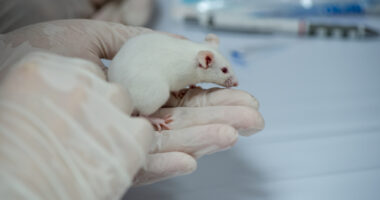Shorter, more active Sjögren’s disease linked to greater risk of lupus
Low white blood cell, low platelet count, high autoantibodies also tied to lupus

People with Sjögren’s syndrome who’ve had it for fewer than three years or whose disease is more active are at a higher risk of developing lupus, according to a study in Korea.
Other factors linked to a higher lupus risk included a low number of white blood cells, low platelet counts, low levels of immune complement proteins, and high levels of certain self-reactive antibodies.
“Clinicians should be attentive to [Sjögren’s syndrome] patients with the above factors, who are at risk of [lupus] development in the future,” the researchers wrote in “Predictors for future development of systemic lupus erythematosus in Korean Sjögren’s syndrome patients,” which was published in Lupus.
“Learning as much as possible about the [Sjögren’s syndrome] disease process will enable individuals with commonly associated diseases to be aware of problems and symptoms,” the Lupus Foundation of America noted in a press release about the study.
An autoimmune disease, Sjögren’s syndrome is caused by self-reactive antibodies that mistakenly attack healthy moisture-producing glands, most commonly those that make tears and saliva. This causes symptoms such as dry eyes and mouth.
Occurrence of lupus in Sjögren’s patients
It is not uncommon for Sjögren’s to co-occur with another autoimmune disease, particularly if some disease mechanisms are shared. That’s the case with lupus, also called systemic lupus erythematosus (SLE), which is estimated to occur in 14-17.8% of Sjögren’s patients.
Lupus is also caused by self-reactive antibodies attacking healthy tissues and molecules, particularly proteins inside the cellular compartment where DNA is stored. People with lupus often have joint pain, skin rashes, and excessive tiredness, and about 1 in three have Sjögren’s syndrome.
What makes some patients more likely to develop both autoimmune diseases isn’t known, however, leading researchers in Korea to draw on data from 1,082 people with Sjögren’s and no other autoimmune disease who visited Seoul St. Mary’s Hospital in Korea between January 2012 and March 2021. The patients were followed for a median of nearly three years.
Younger age, shorter duration and more active disease
Forty-nine patients (4.5%) developed lupus after a median of more than two years. They were diagnosed with Sjögren’s at a significantly younger age (median, 43 vs. 52) and lived with the disease for a significantly shorter time (15.2 vs. 33.3 months) relative to those who didn’t develop lupus.
A significantly greater proportion of patients who developed lupus had lymph node swelling (18.4% vs. 7.7%) and kidney involvement (8.2% vs. 1.8%) at their first hospital visit (baseline).
At baseline, they also scored significantly higher on the EULAR Sjögren’s syndrome disease activity index (ESSDAI), a standardized measure of Sjögren’s disease activity wherein higher scores indicate more active disease.
Low blood cell counts and the presence of certain self-reactive antibodies were also significantly more common among those who ended up developing lupus.
When looking for potential risk factors of lupus, the researchers found that having high disease activity (ESSDAI score of 14 or higher) at baseline was significantly associated with an eight times higher risk of lupus in the future. Also, having Sjögren’s for less than three years at baseline was linked to a more than twofold higher risk of future lupus.
“Shorter disease duration and higher disease activity of [Sjögren’s syndrome] at baseline may be risk factors for future SLE development,” the researchers wrote.
A lower than normal number of white blood cells (leukopenia) and of blood-clotting platelets (thrombocytopenia) increased the risk for lupus by three to four times.
Testing positive for antibodies against double-stranded DNA, ribonucleoprotein, or ribosomal P — three types of self-reactive antibodies linked to lupus — was associated with an increased lupus risk, by up to nearly 14 times.
The strongest risk factor was hypocomplementemia — or deficient levels of proteins of the immune complement system — which increased the risk of someone with Sjögren’s developing lupus by about 29 times.
The findings suggest that in the presence of any of these potential risk factors, “close monitoring will be necessary during the follow-up period, considering the possibility of future SLE development,” the researchers wrote.







